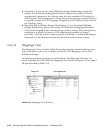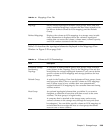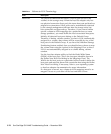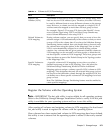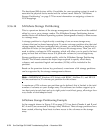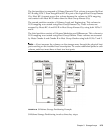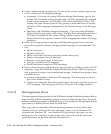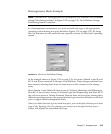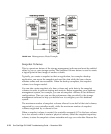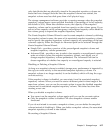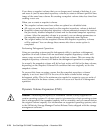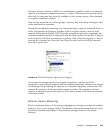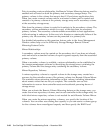
3-74 Sun StorEdge 5310 NAS Troubleshooting Guide • December 2004
■ Create volumes on the storage array. As part of the volume creation, specify one
of two volume-to-LUN mapping settings:
■ Automatic - If you are not using SANshare Storage Partitioning, specify this
setting. The Automatic setting specifies that a LUN be automatically assigned
to the volume using the next available LUN within the Default Group. This
setting will grant volume access to host groups or hosts that have no specific
volume-to-LUN mappings (designated by the Default Group in the Topology
View).
■ Map later with SANshare Storage Partitioning - If you are using SANshare
Storage Partitioning, specify this setting. The Map later setting specifies that a
LUN not be assigned to the volume during volume creation. This setting
allows definition of a specific volume-to-LUN mapping and creation of storage
partitions.
■ Define the storage partition topology (including host groups, hosts, and host
ports) that access the volumes. Storage partition topology is reconfigurable. You
can:
■ Move a host port
■ Replace a host port
■ Move a host from one host group into another host group
■ Delete a host group, host, or host port
■ Rename a host group, host, or host port
■ Change a volume-to-LUN mapping
■ Define additional volume-to-LUN mappings
■ Grant volume access to defined host groups or hosts by defining volume-to-LUN
mappings, using the SANshare Storage Partitioning Wizard. Each host group or
host is granted a unique view of partitioned storage. A defined host group or host
can either access:
■ Volumes with default volume-to-LUN mappings - The host group or host is
part of the Default Group.
■ Volumes to which they have been granted access through a specific volume-to-
LUN mapping - The host group or host will be part of a storage partition.
3.3.6.15 Heterogeneous Hosts
The heterogeneous hosts portion of the SANshare Storage Partitioning feature allows
hosts running different operating systems to access a single storage array. To specify
different operating systems for attached hosts, you must specify the appropriate host
type when you define the host ports for each host.
Host types can be completely different operating systems, such as Solaris and
Windows NT, or variants of the same operating system, such as Windows NT -
clustered and Windows NT - non-clustered. By specifying a host type, you are
defining how the controllers in the storage array will work with the particular
operating system on the hosts that are connected to it.





